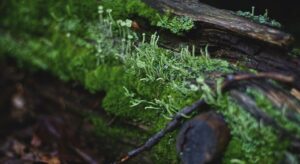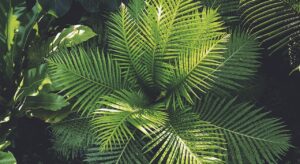The world of plants is vast and varied. Among its representatives living in water and on land are giants reaching 100 meters or more in height, and microscopic organisms, grasses and woody plants. The latter include trees, shrubs, lianas and other plant life forms whose main distinguishing feature is the presence of active cambium, which produces layers of secondary xylem (wood) in the roots and stems.
The woody flora of the globe includes more than 40 thousand species, most of which are distributed in tropical and subtropical areas.
In the process of evolutionary development and adaptation to changing growing conditions woody plants formed a large number of species that differ both in external structure and in their biological characteristics. To better understand this diversity of plants, it was necessary to systematize and classify them. These attempts were made a long time ago, the first one being in the 4th century B.C. by Theophrastus. The most complete system based on the morphological characteristics of plants was developed by Carl Linnaeus, who laid it out in 1758 in his book Species plantarum. He described and named more than 1,300 plant species. The basics of this classification are still used in botanical science today. However, the modern classification is based not only on morphology, but also on scientific data on plant anatomy, ecology, cytology, as well as biological, physiological and paleobotanical studies using methods of mathematical analysis. On this basis, all plants are divided into 2 groups: higher and lower.
The lower ones are mostly unicellular organisms or multicellular colonies without differentiation into organs and tissues; their reproduction process is very simplified.
Higher plants are plants with differentiation into main organs (root, stem, leaf) and tissues. In turn, higher plants are subdivided into 7 divisions, of which the gymnosperms and angiosperms, numbering over 240 thousand species, include all woody plants.
Each individual plant of a species acquires a number of traits in the process of evolution that distinguish it from other plants of the same species. These differences can be both hereditary, i.e. inherited, and non-hereditary. In the first case it is genotypic and in the second case it is phenotypic variability. For example, it is not uncommon to see trees with narrow crowns in dense stands, but their offspring growing in thinned stands will not always produce a narrow crown. If a number of specimens form a crown similar to the parental one, it is possible to speak of the inheritance of this trait with a certain degree of probability.
By selecting and breeding plants with positive deviations (larger flowers, fruits, original crown structure, beautiful shape and color of leaves, etc.), breeders expand and enrich the assortment of useful plants used by man.
Many forms and varieties of woody plants, which are superior to species-specific plants in terms of their valuable qualities for humans, do not always transfer them during seed propagation. For this reason, forms and varieties are usually propagated vegetatively: by grafts, cuttings, grafting, tissue culture; in this case all signs of the mother plant are preserved.
Tree plants are also classified according to the peculiarities of their structure, size, relation to the conditions of growth, as well as other features. According to the nature of the development of the trunk (stem), woody plants are represented by different life forms – trees, shrubs, semi-shrubs, shrubs. Trees – the trunk is clearly expressed. Shrubs – trunk is not expressed, branches develop from the base of the main axis, soon dying off. Semishrubs – plants with perennial, woody lower parts of shoots and annual, annually dying off their upper parts (raspberries). Shrubs are low (up to 50 cm) shrubs, usually completely wintering under the snow (cranberries, heather).
Of particular interest for landscaping works are climbing shrubs, unable to independently maintain an upright position, so-called lianas. They are characterized by long stems, which, being fixed, climb on supports.
Classify plants also depending on their height. Trees of the first magnitude, reaching more than 25 m (pine); of the second magnitude – 15-20 m (pear); of the third magnitude – 7-15 m (apple tree) and the niche, not exceeding 7 m (common juniper). Shrubs are divided into high – more than 2.5, medium – 2-2.5 and low – up to 1 m in height.
According to the intensity of growth, trees are distinguished: fast-growing – with an annual growth in height of more than 1 m (poplar), moderate growth – with an annual growth of 0.5-1 m (oak) and slow-growing with growth up to 0.5 m per year (boxwood).


